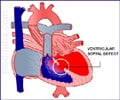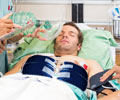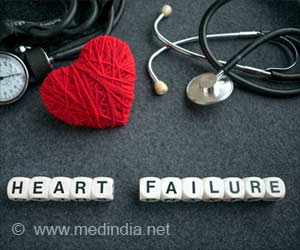A bystander who attempts cardiopulmonary resuscitation (CPR) can quadruple the survival rate to over 50 per cent
A bystander who attempts cardiopulmonary resuscitation (CPR) can quadruple the survival rate to over 50 per cent, researchers at St. Michael's Hospital working in conjunction with EMS services, paramedics and fire services across Ontario have found.
But Dr. Laurie Morrison and the research team at Rescu have found only 30 per cent of bystanders in Toronto are willing to help, one of the lowest rates of bystanders helping others in the developed world."Over the last four years, we have been working hard with paramedics and firefighters in Southern Ontario to increase the survival rate of people who experience cardiac arrest outside of the hospital," says Dr. Morrison. "Since 2004, our efforts have managed to triple the survival rate in the Toronto area but it is still less than 10 per cent."
Compared to other cities during the same time frame, Toronto has much lower rates of bystander CPR and survival. The research team wants to encourage all Canadians to learn the basics of CPR. Home is one of the most common places for cardiac arrests so learning CPR could mean saving a family member's life.
"Even if you perform hands-only CPR, and focus on compressing the chest, you can give a victim of cardiac arrest as much as a 1 in 2 chance of surviving," says Dr. Marco Di Buono, Director of Research at the Heart and Stroke Foundation of Ontario, "on the contrary, doing nothing virtually guarantees the victim will not survive at all."
Dr. Morrison's research group, Rescu (www.rescu.ca), is based out of St. Michael's and dedicated to out of hospital resuscitation. It is a collaborative network of EMS and fire services, paramedics and firefighters and over 40 hospitals in Southern Ontario. Rescu is the largest research program of its kind in Canada and the US, and is world renowned for their clinical trials in out of hospital treatment of cardiac arrest and life threatening emergencies.
The trial included Peel EMS, Peel Fire Brampton, Peel Fire Mississauga, Muskoka EMS, Toronto EMS, Toronto Fire, Durham (Ajax Fire, Brock Fire, Clarington Fire, Oshawa Fire, Pickering Fire, Scugog Fire, Uxbridge Fire and Whitby Fire) and Halton.
Advertisement
Although more than an estimated 1,800 AEDs are in public places in Toronto and adjacent cities, the study found only 750 of the devices were registered with Toronto EMS. This is problematic when a 911 dispatcher cannot alert a bystander or EMS person that an AED is close by. In times of an emergency the dispatcher can be an effective coach for bystanders to help others.
Advertisement
"You can learn CPR in 20 minutes with a personal learning kit available through the Heart and Stroke Foundation website or by simply watching a video on Youtube," explains Dr. Morrison. "I believe that we should be teaching CPR and AED use in all schools so that helping someone in cardiac arrest is a learned behaviour. You may never need to use your training but if you are a witness, you will be more likely to jump in and help. If you do nothing, very few will survive."
Under Ontario's Good Samaritan Act of 2001, bystanders who assist others with all good intentions are not liable.
Source-Eurekalert
RAS















